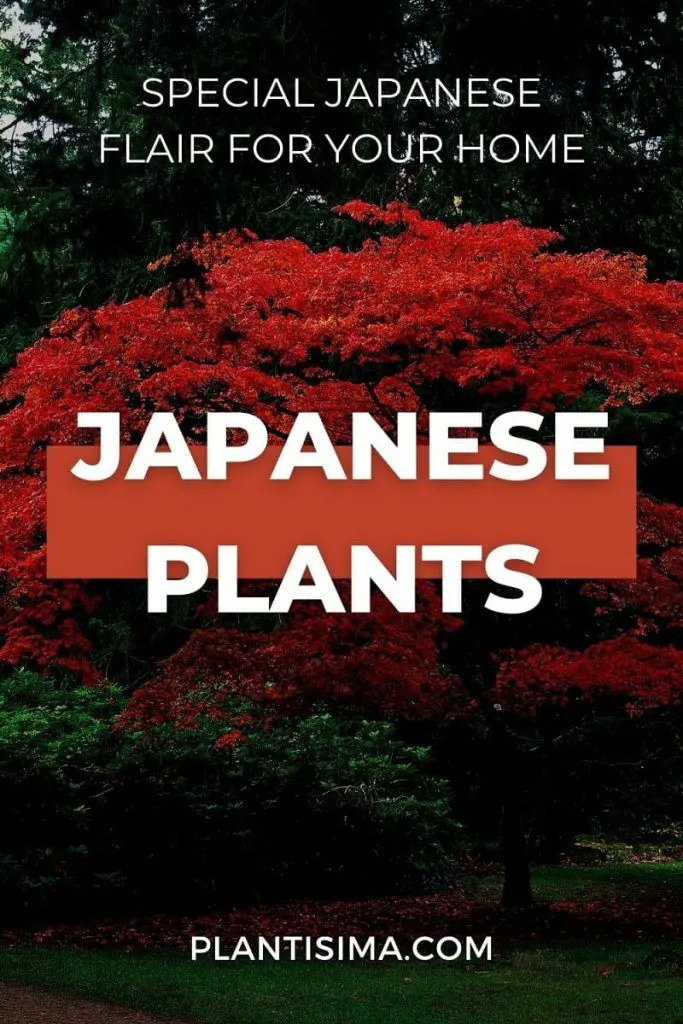If you have been lacking inspiration for decorating your garden, balcony, or yard, or just want to add some new plants to your apartment, you will find the answers to this in this article with Japanese Plants.
Today we have prepared the most famous and most beautiful Japanese plants for you. You will learn how to take care of them and you will eventually be able to choose the perfect plant for you.
Japanese Gardens Unique Style With Japanese Plants

The main elements of the Japanese garden are always conifers, and cherries (sakura). The composition is completed by moss and an artificial water tank.
All of the above elements must be alive. When creating a garden in the Japanese style, remember the main rules:
- respect for basic natural principles;
- complete lack of symmetry and parallel lines;
- uniqueness, oddness, and incompleteness of the elements;
- the garden should be small;
- learn about Japanese flower meanings;
- it should contain various umbrellas, lanterns, bridges, and a flower garden.
The gazebo for the Japanese garden should be a small house, where tea-drinking ceremonies will be held, nothing more.
The main task is to move away from the hustle and bustle of the world and calm down. The gazebo should be made of stone or wood.
The design should be combined with the design of the garden, it should be located in the most secluded corner of the garden.
According to Japanese customs, the slats of the canopy are located from west to east, the south side should cover the empty wall of the gazebo.
1. Japanese cherry: Most Popular Plant In Japan
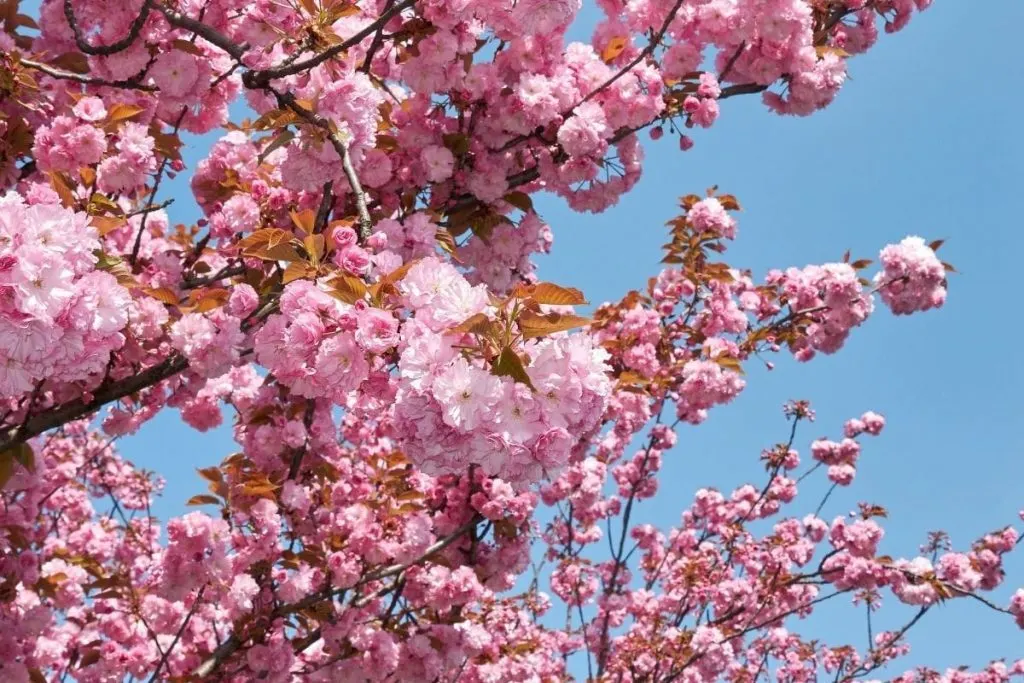
Every culture, including Japanese culture, has a special plant that is mostly grown and sought after. In this case, the most popular plant in Japan is the Japanese cherry.
- Japanese cherry (Prunus serrulata) is a plant that belongs to the family Rosaceae (roses). It is also known as hill cherry, oriental cherry, and East Asian cherry.
- It should be noted that it is not advisable to transplant it, ie change the place of planting because the Japanese cherry does not suffer from stress. Planting on lawns is also not recommended because mowing the grass can damage its surface roots. The place for growth should have a diameter of at least a meter and a half.
- The soil in which Japanese cherries are planted should be loose. The hole should be at least twice as wide as the cherry seedling. After placing the seedling in the ground, it is very important to tread the soil well on the surface as there should be no room left for air to flow to the roots.
- Although trees are usually pruned, Japanese cherries do not need them. In most cases, it is enough to thin out its branches. For the most part, it is enough to prune dry branches, of course, when it is not in bloom. Japanese cherries are known to suffer from diseases and suffer from pests from which rose bushes get sick and suffer, such as spotted leaves, mold, root rot, and plant lice.
- They can also often get fungus, the most famous of which is Monilia. This fungal disease can affect both flowers and shoots.
2. Black Bamboo
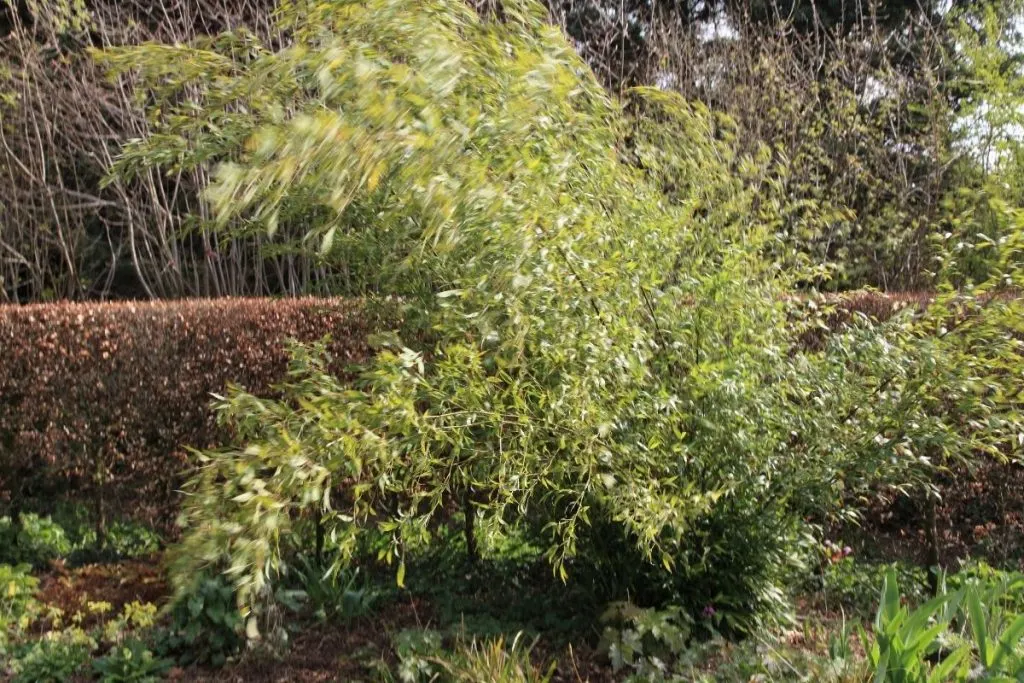
Black Bamboo (Phyllostachys nigra) is a perennial genus from a large family of grasses. It’s relatively drought tolerant. Their light green color will make you fall in love with them immediately.
- Bamboo is a perennial that stays on the same surface for decades, so it is necessary to choose the final place of growth before growing. It usually grows as a tall plant, so it is not advisable to place it next to plants of lower growth that require a lot of light.
- Bamboo is a tropical plant, so it requires larger amounts of water to grow. During the spring months, it can grow from rainfall, but it needs to ensure a constant supply of water during summer droughts. It’s found in gravel gardens mostly.
- It is desirable to enrich the soil with organic fertilizer before planting bamboo, which will encourage a loosening of the soil. During the first few years of cultivation, the plant requires more nutrients (liquid mineral fertilizer) during watering.
- Bamboo has no seeds to propagate, and it spreads by rhizome. The rhizome grows horizontally in the ground and produces shoots every spring. Some spread linearly, so they cover larger areas faster, while some spread in clumps, and form dense bushes that spread concentrically.
- Bamboo loves nutritious, well-drained soil and light soil, rich in minerals and deep. Although many species can adapt to poor and shallow soils, they develop sparse canopies and weaker stems.
- Black Bamboo is a plant of tropical climate, so it is primarily suitable for warm and humid climates with full sun. However, it can survive both low temperatures and frost. It is not sensitive to salt and gusts of wind.
3. Camellia Japonica
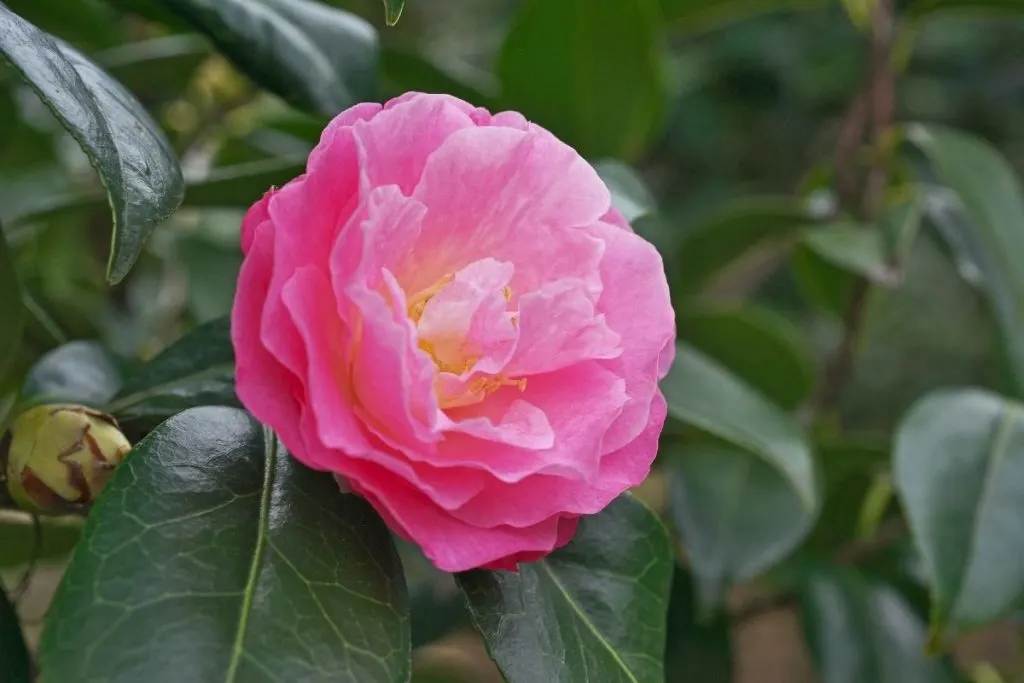
An evergreen plant camellia bush (Camellia japonica) with large and gorgeous flowers, is a favorite among flower lovers. People love it despite all the problems and the fact that the flower has no scent. Its glossy foliage will make your yard magical.
- When planting, check what kind of substrate you are taking because camellias need acidic soil (pH 5.5 to pH 6.8). A mixture of sandy loam, fir bark, and oak leaves suits them. Substrate suitable for planting camellias, you can buy at our points of sale.
- These floral beauties do not like direct sunlight, they prefer light shade more, so protect them from it, especially in the afternoon. It is best to place them somewhere in the shade.
- Does not like wet soil and excessive watering, the root should be moderately moist otherwise it can rot. Use standing water for watering, rainwater would be best.
- Transplant the plant into a larger pot according to the rules that apply to any plant. To make it look more beautiful, you can also put a pot with a plant in a decorative pot.
- In most camellias, excessive buds are formed, so undeveloped ones should be removed. It is removed so that there are two to three leaves between the two buds, the buds must have enough space to be able to bloom.
- Those braver and more skillful can try and propagate camellias themselves. It is easiest to cut, which are taken in July or August. They should be planted in loose soil, kept in a bright and warm place, and add the hormone for the growth of woody cuttings.
- Propagation by aerial offspring should be equally successful, and seed propagation should still be left to experts who do so in adapted conditions.
4. Sango Kaku
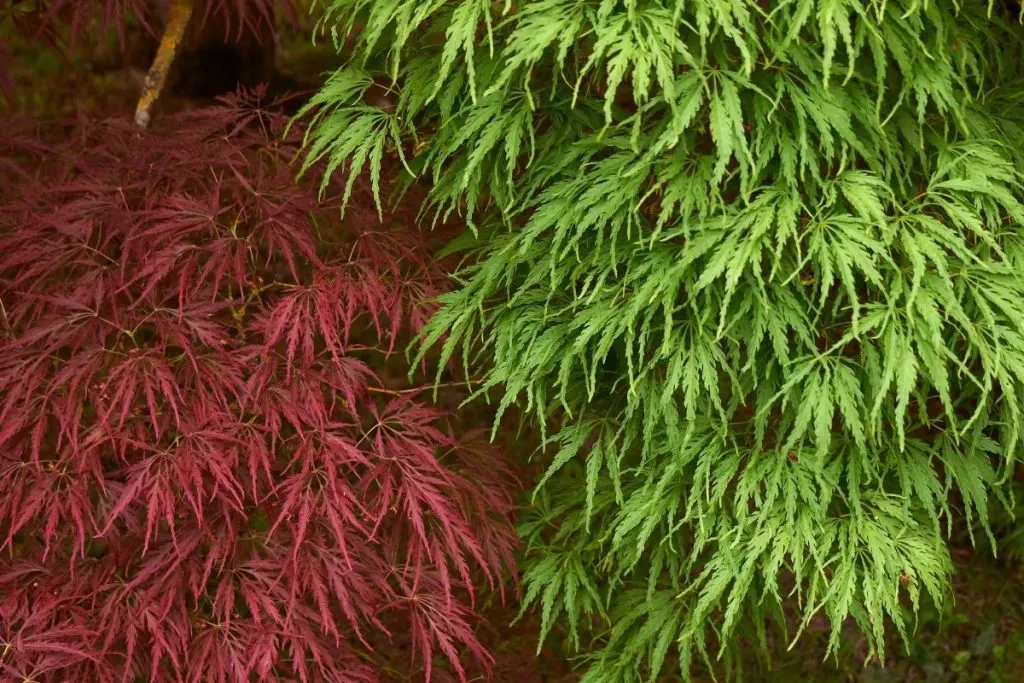
Sano Kuku (Acer palmatum) are very attractive trees and shrubs. Japanese maple sango Kaku looks great even in the cold season due to its leaf color. This tree is a big part of Japanese culture when it comes to flowers.
- If there is an assumption that the temperature will fall lower in winter, then we must try to make a shelter for the tree. This is not difficult, because if a low variety, 4.5 feet high, is grown, then a frame is made, and a special warming fabric is stretched over it.
- It is necessary to fertilize the tree in the spring once a month. To do this, a mixture of fertilizer is laid on the surface of the circle near the stem, and a layer of 3-inch compost is poured on top. The last time fertilizers are applied is in early July.
- Do not use high-concentration nitrogen fertilizers of high concentration. The fact is that the Japanese maple does not like it. Trees grown under normal conditions practically do not get sick and are not affected by pests.
- Pruning Japanese maples is not necessary They form a very beautiful crown. But if you suddenly want to correct this shape, then cut the tree.
- Propagating the plant by itself is not that difficult. Primarily use 2 ways to propagate maple.
- When planning maple cultivation it is necessary to take into account the fact that it likes to grow in well-lit areas, quite demanding on soil composition: prefers rich soil mixtures with good nutrients. They like a bit of sandy soil as well.
5. Crystal Beauty
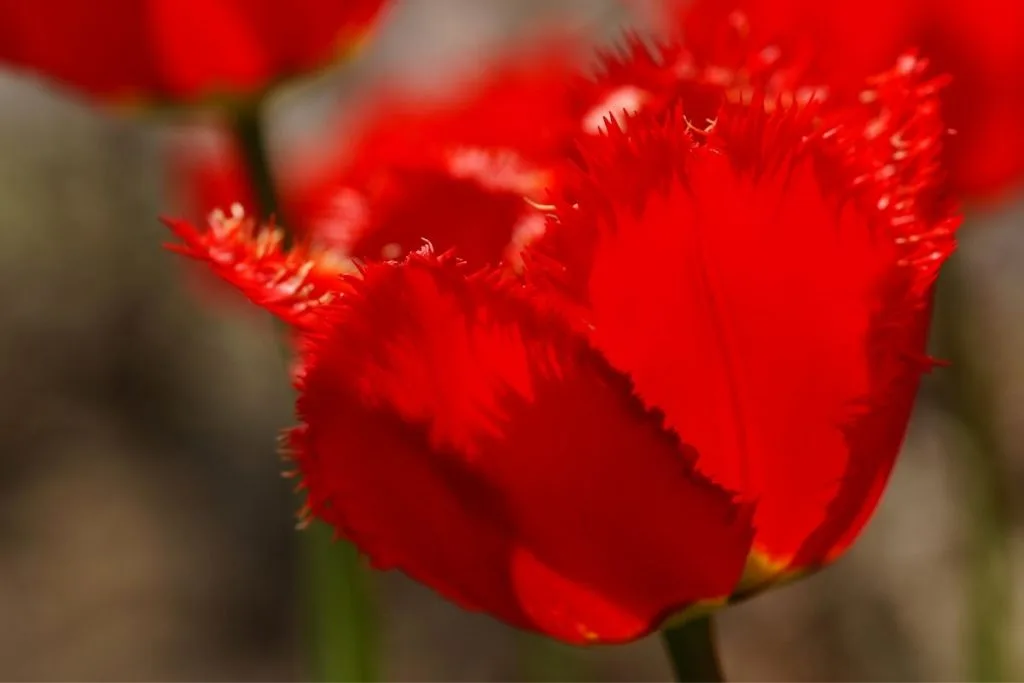
Tulipa or Crystal Beauty is one of many dwarf varieties of Japanese plants.
Crystal Beauty is a perennial herbaceous plant of the lily family. The family includes 15 genera and more than 700 species of beautiful flowering plants.
- Crystal beauty does not require large amounts of water, especially if planted in the spring. Growth is most often encouraged by water left over from spring rains, and later species need additional watering during dry periods.
- Tulip loves hummus and rich soil, so before planting it is necessary to do quality tillage, which includes fertilizing with an organic fertilizer in the autumn preparation, and compost or manure can be used.
- Tulip, unlike other species, is propagated by bulbs. The bulbs propagate independently under the ground, so for propagation, it is necessary to dig up the plantation underground and take over the bulbs that we want to propagate further.
- Tulip loves hummus and loose soil. In the autumn tillage, it is necessary to dig out a minimum of 15 inches of soil and loosen it, manually or mechanically. This tulip likes black soil and deep, humus soil.
- Depending on the area where it is grown, the bulbs need to be laid in the ground to successfully overwinter. It likes sunny or semi-shady positions, but shady places should be avoided. It’s a perfect plant for your pond or as a landscape decoration.
- Unlike other flowering plants, the tulip is characterized by planting from the bulb. It is necessary to choose healthy and unpeeled bulbs and prepare the soil for cultivation. Bulbs are planted in the garden in the fall, so the primary tillage should be done during August.
6. Japanese Wisteria
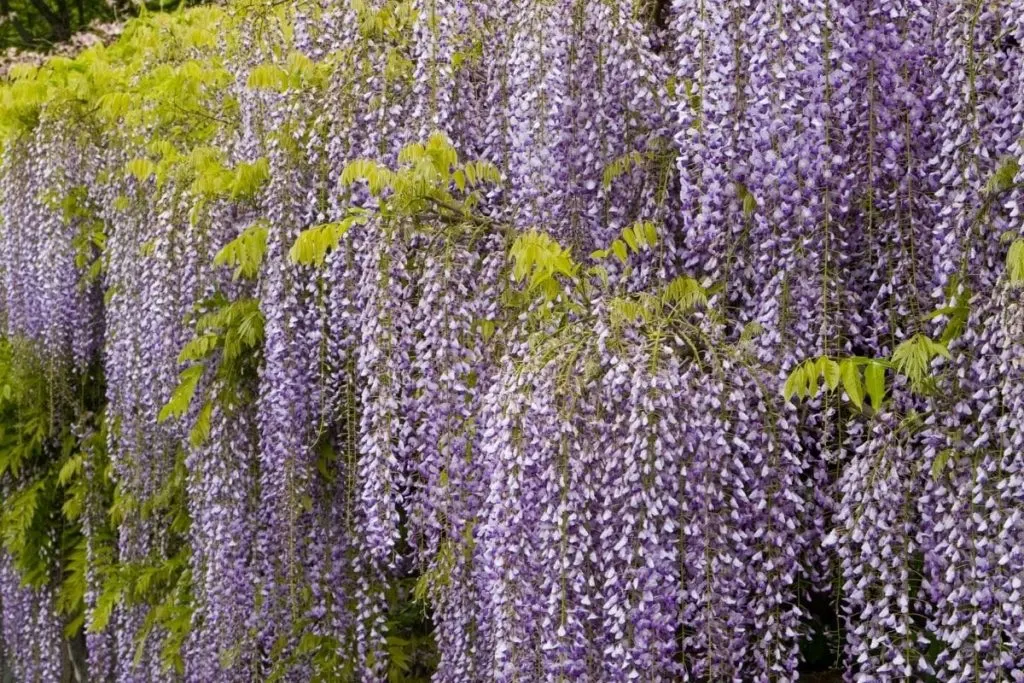
Japanese Wisteria (Wisteria floribunda) is among the most attractive deciduous climbing shrubs of deep purple color and hardy and strong Japanese plants. This climbing plant has very fast growth, with abundant and graceful flowering. It’s one of the best Japanese plants for Japanese-style gardens, but it is an outdoor plant, not a purple house plant.
- Wisteria is not a fan of full sun or full shade, make sure to provide it with partial shade and partial sun. They make a great focal point in a garden design.
- Since the genus, Wisteria belongs to the family Fabaceae or legumes, and wisteria after flowering creates a multitude of long dark pods containing round large, dark seeds. From this seed, a new plant can be grown without any problems, but it will ripen slowly and bloom only after 10 or more years. That is why growers today prefer to propagate it with the help of cuttings.
- Propagated by root shoots, seedlings, or seeds. When we say propagation by shoots, it means that the plant from the roots releases shoots that I simply separate and plant separately.
- This plant does not need too much water for its growth, do not overdo it with watering, it is not a fan of moist soil.
- Unfortunately, this wonderful plant won’t bloom all year round. Wisteria blooms in late spring and early summer. But these Japanese plants thrive for a long time and it is for sure a perennial shrub plant.
7. Japanese Sedge
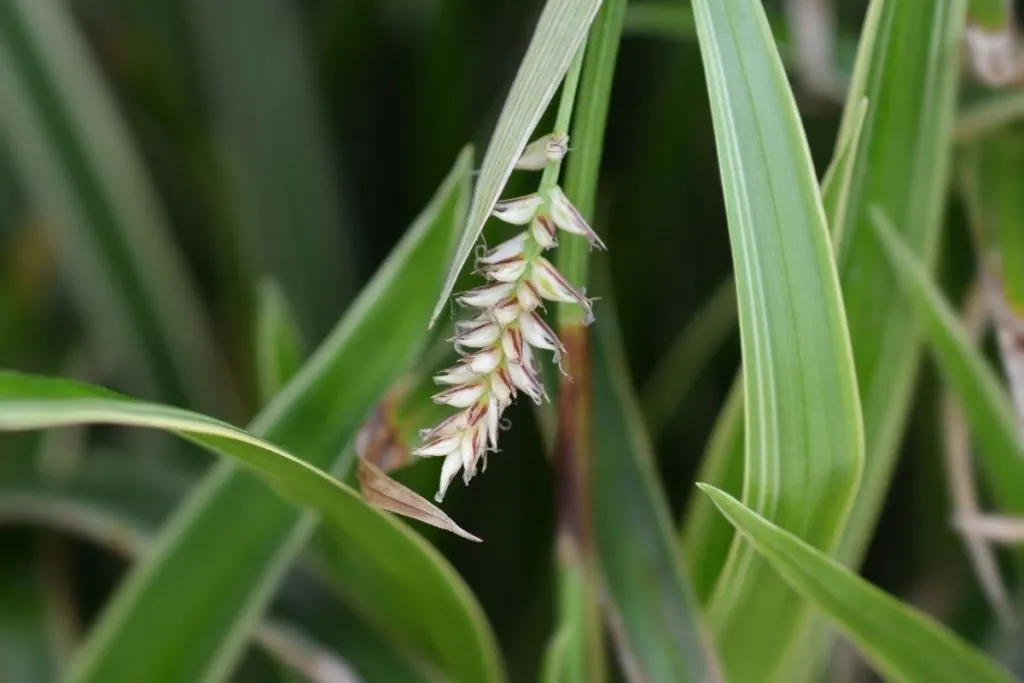
The Japanese sedge, also known as the Variegata, forms broad and dense clusters over 35 inches tall. It comes from the wetlands of Japan and is one of the best plants for a Japanese garden. Japanese gardeners love and adore this plant.
- Its leaves are broad, stiff, and winter hardy – which prolongs the life of the plant for the whole year. The plant feels good in humid and sunny places, but can also live in “darker” landscapes.
- During flowering it gives extremely delicate, yellow flowers – they are built into dark green spikes.
- Japanese sedge can be placed completely in the shade, but also prefers places protected from gusts of wind. However, it is perfect in partial shade or on the banks of water reservoirs.
- It looks perfect on shaded terraces, on a balcony, in the yard, and makes a great ground cover. It also looks great in winter, when the frost settles on the leaves and flower shoots. For this reason, any possible pruning of sedge leaves is done only in the spring.
- It is good to prune all or partially frozen leaves of the plant when spring comes. Of course, this can do a little harm when you have a few more plants in your garden.
- The wetter the soil, the more Japanese sedge will grow. The opposite is true – a dry position automatically means lower grass!
- Grass with low strands is best planted in slightly larger groups to achieve a great effect of color and aesthetics at the same time.
8. Japanese Cobra Lily For Exotic Look
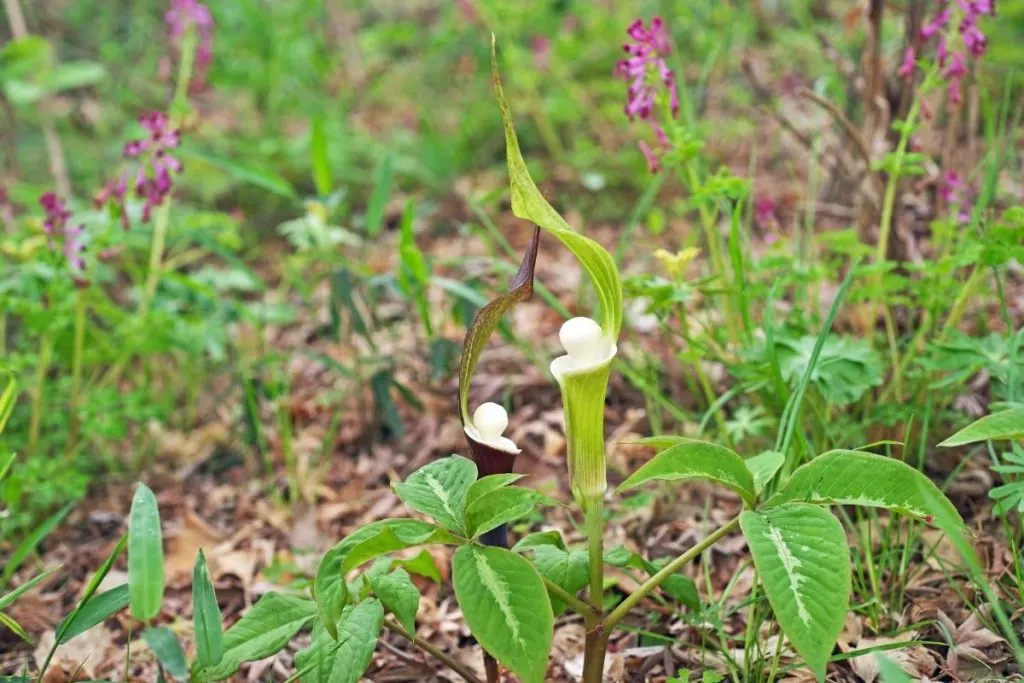
One of the earliest cobra lilies (Arisaema sikokianum) is a tuberous perennial that boasts large, purple-black sequins in early spring.
- It is easily grown in humus-rich and moist but well-drained soils in partial shade and partial sun. The tubers should not dry out if dormant, so they will need protection from the winter in colder areas.
- Japanese cobra lily will enjoy sandy soil. You can mix it with clay soil as well. Organic gardening is welcomed with this plant.
- It grows best when undisturbed in a shady forest garden, cottage, or under the eyes of roses and shrubs. Plant them in groups of a dozen or more plants.
- This plant is usually disease-free, but watch out for snails and grapefruit. Propagate by seed, place seeds in pots in the fall or spring, or remove deviations in late summer.
- Swallowing seeds or flowers of this can cause severe discomfort.
9. Japanese Quince
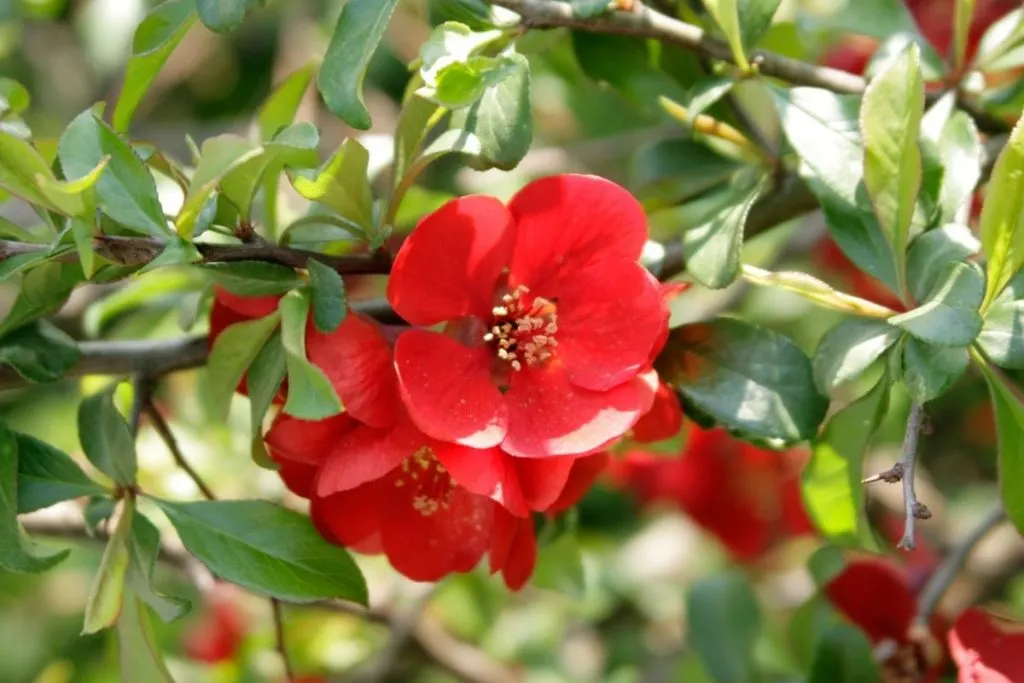
Japanese quince (Chaenomeles japonica) is a plant from the rose family (Rosaceae), native to East Asia.
- Distinctly honey plant, so bees often visit it. It usually grows up to 4 feet in height, sometimes five.
- It is not demanding to grow, likes a sunny or semi-shady position, and is not particularly picky when it comes to soil.
- Japanese quince should be pruned regularly after flowering so that the side branches are pruned to 2 to 3 buds, and too thick branches should be thinned and shaped into a bush.
- It is resistant to winter, cold, and heat, and it tolerates drought quite well, so you don’t have to water it often.
- We can enjoy the beauty of Japanese quince flowers in winter as well! We cut a few twigs with buds and put them in a vase with water and soon we will have beautiful flowers in our living room.
10. Sawara Cypress
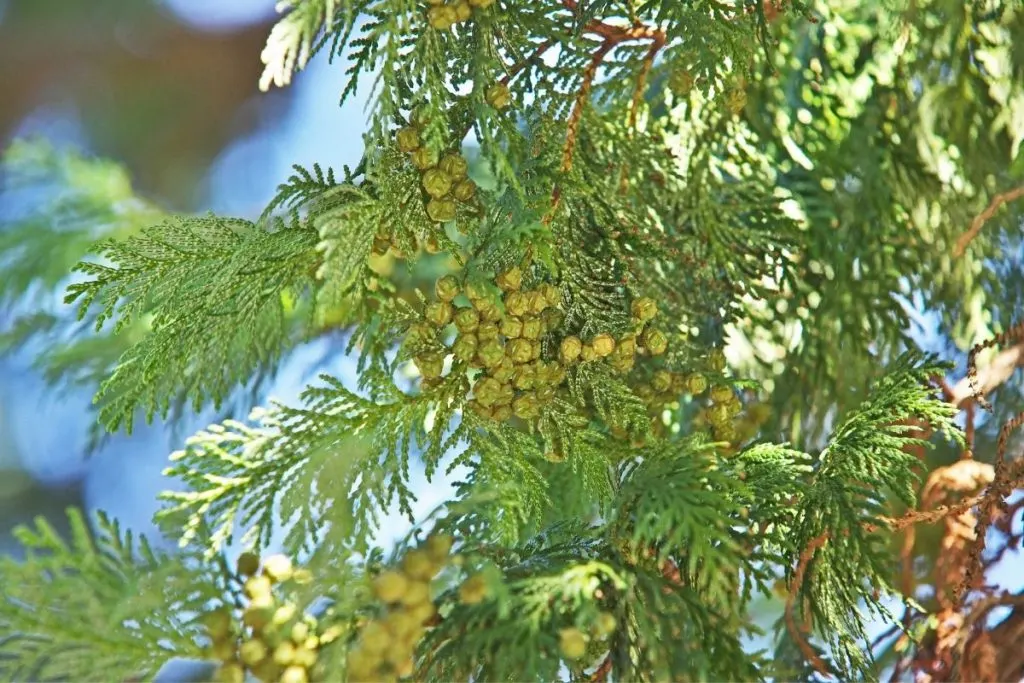
Chamaecyparis pisifera, Sawara cypress is a perennial conifer belonging to the Cupressaceae family. The natural form of Chamaecyparis pisifera is native to Japan, but few people would recognize this species of tree.
- This conifer is very easy to grow and it can survive in almost any condition. It likes soil from acidic to basic, and fresh soil that dries but does not like much water.
- Chamaecyparis pisifera is transplanted preferably in late September or October before it cools down, or in April after severe frosts. This plant thrives in partial shade with little sun.
- Planting cypress is done in the spring, in April, when the soil is slightly warmed after winter.
- The first feeding of seedlings of complex fertilizers is done only after two months of planting, the concentration should be twice lower than that recommended for the plant for adults. Adult Chamaecyparis fed the fertilizer complex twice a month until mid-July.
- Cypress care involves regular pruning of plants. In early spring, remove old, damaged, and dead branches. Chamaecyparis are resistant to pests and diseases, but sometimes you can still spot spider mites and scale insects.
- They often suffer from root rot. The vital functions of spider mites cause cypress to turn yellow and lose leaves.
11. Buddha Belly Bamboo For A Partial Shade On Your Terrace
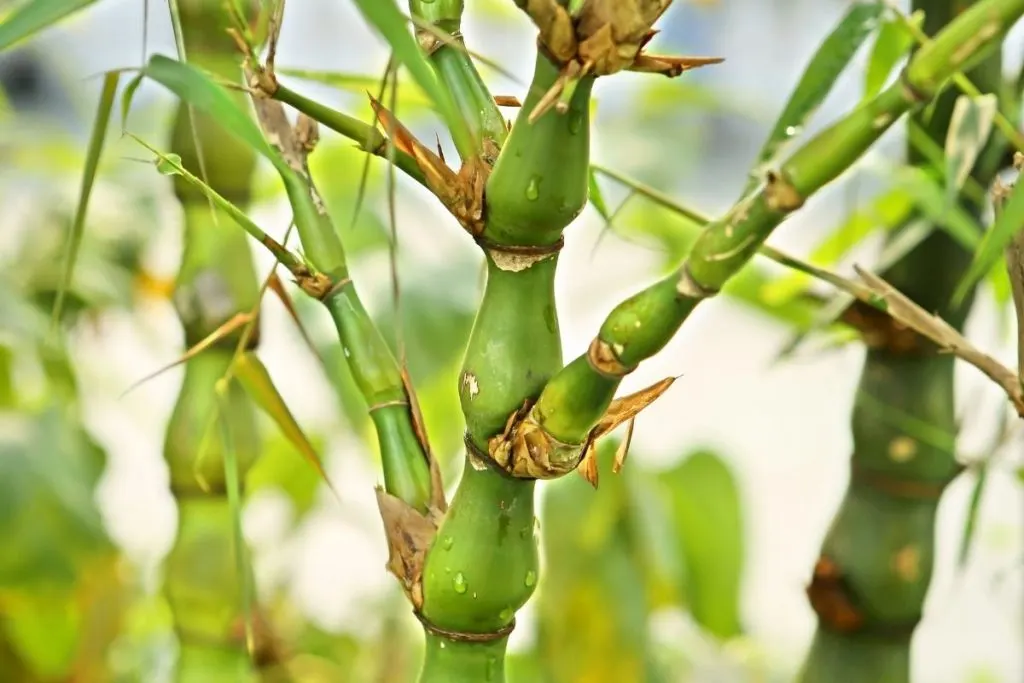
Bamboo ventricosa, buddha belly bamboo is a shrubby herb belonging to the Poaceae family. Originating from the subtropical regions of China, it is today considered a dwarf variety of bamboo species. It’s one of the slow growers’ plants.
- It likes heavy soil, loamy loam, enriched with organic matter, but will support all types of soil whose pH remains from medium acid to slightly alkaline. A mixture of rich pottery soil with a little sand is also suitable in the pot.
- Getting new belly buddhas is not that easy. They will appear when new shoots accumulate among others and when they lack water. Remove the protective sheaths as the growth of new shoots grows.
- Therefore, it is necessary to keep this bamboo container and play on small water shortages, remove the cover of new shoots, and maybe then you will get the familiar protruding stems.
- Maintain humidity – Most bamboo species prefer moist air, especially in warm weather. As long as you avoid excessive watering, do the following things:- Place the bamboo pot over a damp container.- Spray the leaves lightly every few days.- Place a humidifier in the bamboo room.- Keep plants close together.
12. Japanese Boxwood
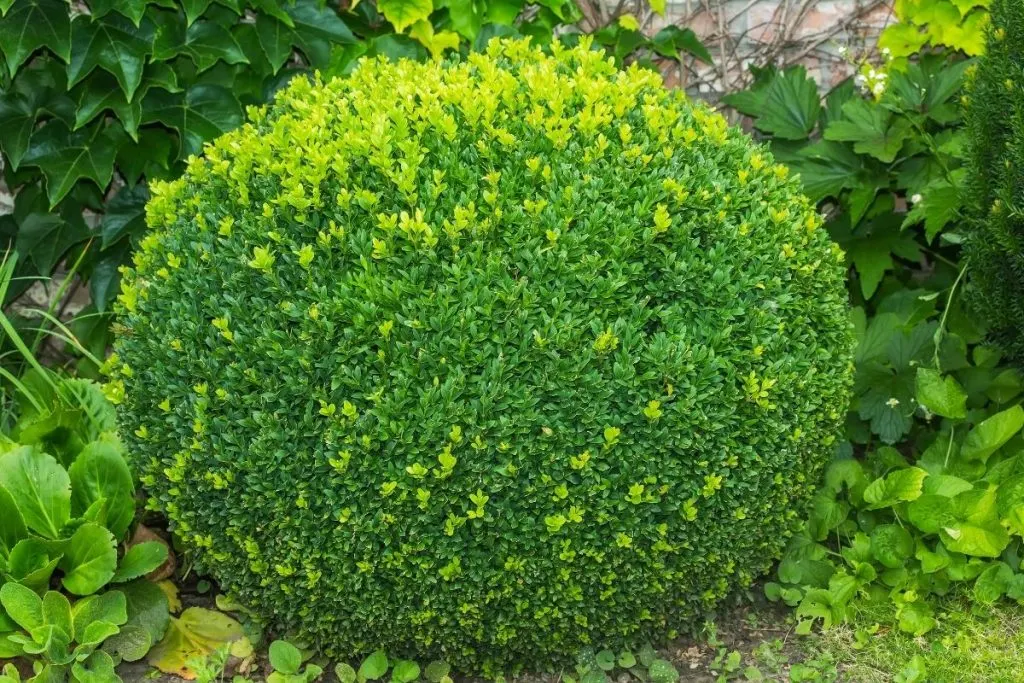
Japanese Plants Boxwood (Buxus sempervierns) owes its popularity to tradition and multiple possibilities of application in horticulture. Evergreen shrub with small leaves and very slow growth. The shape of the leaves and the density give it the possibility of a wide range of pruning.
- Although it is adaptable to various habitat conditions, it is best to plant it in well-drained soil. High humidity can cause damage and even wilting of plants. Never plant it in places where the soil is constantly wet. It grows well in sunny but also in shady positions.
- The hole should be twice the size of the root itself, but not too deep. Plant the plants to the depth to which they were planted in the nursery or a pot. Boxwood is planted at a distance of half a meter when planting for hedges. Too deep planting can cause plant decay.
- In the first few years, it is desirable to carry out regular pruning to achieve good branching. When pruning, the rules that apply to other hedges should be followed – Japanese plants are always pruned so that they are trapezoidal in cross-section.
- This ensures even lighting of all parts so that the Japanese plants will be fuller and greener. Propagation is best done by cuttings. Cuttings are taken in mid-summer from well-formed plants. The most optimal cuttings are about 6 inches long, and about two years old.
- It is obligatory to remove the leaves from the cuttings from the lower side, after which it is necessary to drive them halfway into the ground.
- To make the Japanese plants fuller and greener, cut them regularly, water them and feed them with fertilizer. Boxwood should be fed once or twice a year.
Achieve A Calming Atmosphere With Japanese Plants The Chinese Elm
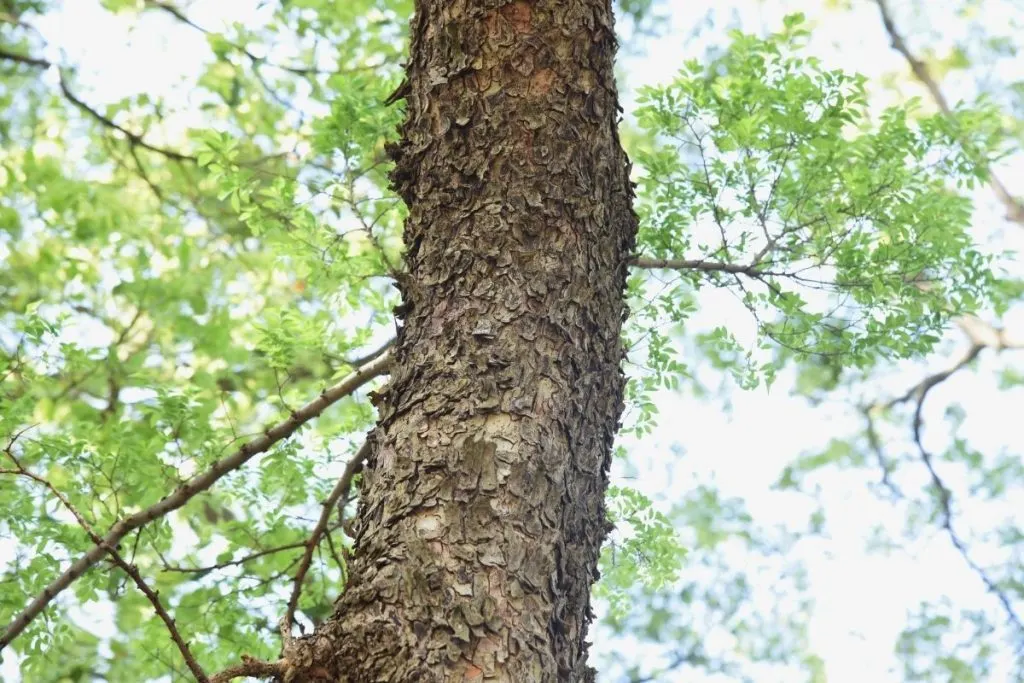
Ulmus parviflora – Chinese elm is a small to medium-sized tree belonging to the Ulmaceae family. Ulmus parviflora is from Asia, from Japan and China. Elms have always seduced the landscape with their graceful silhouette and small leaves.
- Ulmus parviflora requires sunny exposure to partial shade. Very durable, especially tolerant of cultural conditions. Although his preference is for fresh, soft, slightly alkaline soils, he can still tolerate limestone and tolerate some droughts. The only thing this plant is afraid of is soaked soil, poorly drained.
- Requires high brightness, and several hours of direct sunlight per day. The bonsai pot should be watered regularly so that the substrate never dries completely between two waterings.
- Tap water is acceptable for Chinese elm. Drain excess water in the glass each time, as it should not keep your feet in the water.
- At the end of winter, you must remove dry, diseased, weak, or broken branches. Also take the opportunity to give it the shape you want, removing some low branches from the trunk so it gets a tree-like look.
- It is quite resistant, but if the conditions are not too good, it can have rust and much less often graffiti. Ulmus parvifolia is one of the elm species least affected by this latter disease.
History Of Japanese Gardens And Japanese Plants
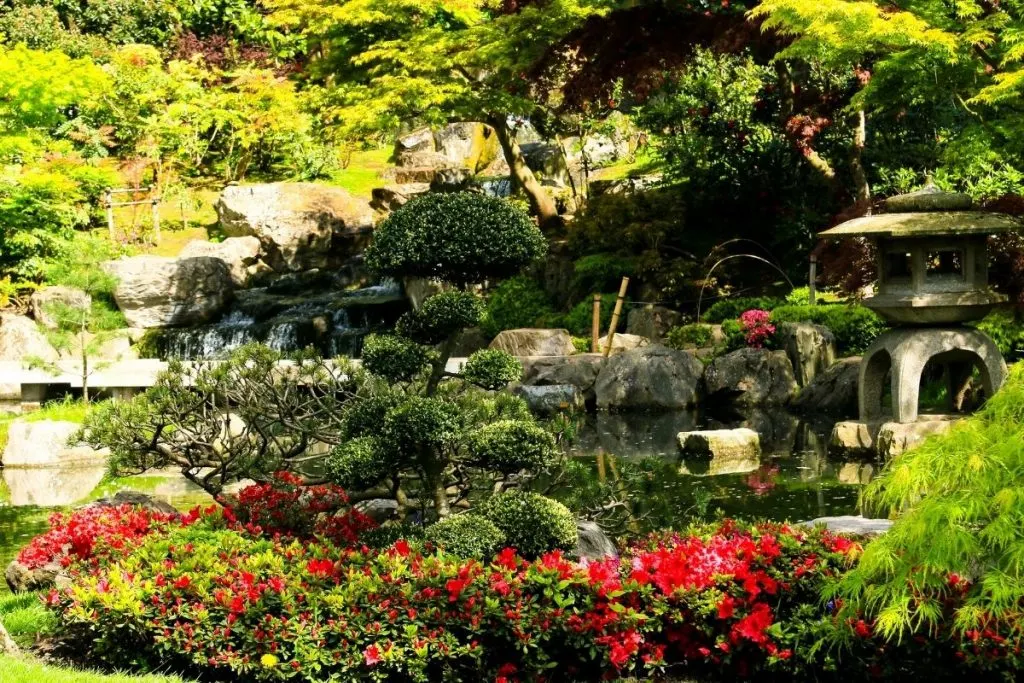
Japan’s culture is the complete opposite of European culture.
Zen aesthetics was created by merging 2 religions: Zen Buddhism and the indigenous Japanese religion – Shinto. The fusion of cultures has completely formed a new system of views and values, where nature and man interact.
Nature was considered divine: magnificent mountains and rocks, lakes, forests – all of which were endowed with magical properties. Such unusual performances were the basis for the creation of Japanese gardens. The main goal of the garden is to create a reduced model of the universe on a rather small piece of land.
The first Japanese gardens imitated the seashores with the help of artificial reservoirs, where the same artificial rocks and islands were located in the center.
Wrapping Up About Japanese Plants
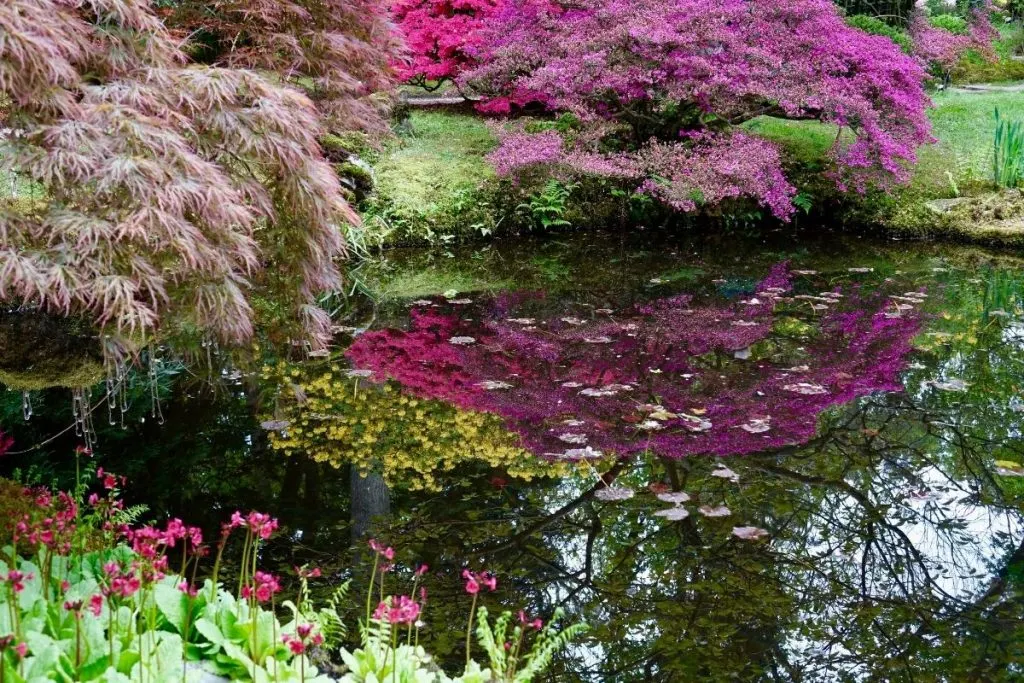
I think you have now acquired all the necessary knowledge to create your Japanese garden. You may just bring a little Japanese atmosphere with your new Japanese plants to the apartment, but whatever you choose, it will look great!
Be brave and dare to try to plant some of the above-mentioned Japanese plants. If you plant it now, you may enjoy the shade of those trees in years to come while sipping tea.
Give yourself time to decide and then get to work.
Good luck and see you soon!
